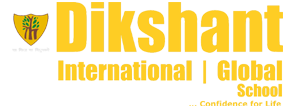To foster the full capabilities of students, continuous and comprehensive evaluation is adopted in school. The whole curriculum is divided into different units which are evaluated on a monthly basis. The learning outcomes which a child is expected to know at the end of a particular month are already defined and are handed over to parents in the form of syllabus booklet.
The knowledge, understanding, and skills attained by students on each topic are evaluated in an ongoing and regular process. The assessment of student’s learning is through regular teacher-student interaction and activities that take place both in and out of the classroom.
Various tools used for continuous assessment are:
| ASSESSMENT FORMATS | |
| Format | Nature |
| Paper and Pencil Tests | Written responses based on individual’s learning of the topic – Can be Objective types, Fill in the blank, True-False, Label a drawing, Matching, Multiple choices, short answer, long answers (wherever applicable) etc |
| Performance Tasks/ Activities | Require students to perform activities in the classroom based on their learning experience of the topic. |
| Oral Reports | Assess individual and group performance before, during, and after the topic.Require communication by the student that demonstrates his/her understanding of the concept. |
| Checklists | Monitor and record anecdotal information on the basis of daily observations, the response of the child in classroom etc. |
| Investigative Projects and Class Presentations | Require students to explore a topic in class and present either in groups or individual |
| Extended or Unit Projects | Require the application of knowledge and skills in the form of practical projects, models, illustrations or drawings, based on the topics covered in class |

